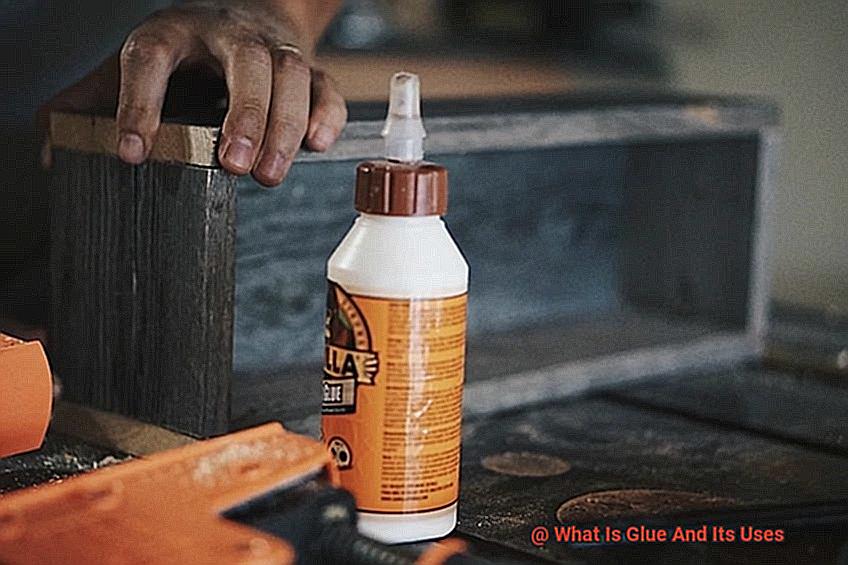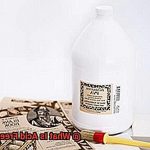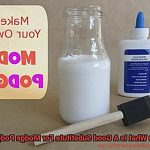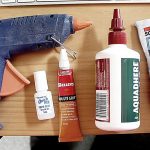Whether you’re a crafty creator, a DIY aficionado, or just someone who appreciates the practical magic of this versatile substance, you’ve found your glue-loving tribe. Glue has been an essential tool for humans since time immemorial, allowing us to mend, build, and create with effortless finesse.
From ancient concoctions made from animal bones to the cutting-edge synthetic adhesives we rely on today, we’ll embark on a journey through the captivating history and evolution of glue. Along the way, we’ll explore the myriad types of glue at our disposal and unravel their remarkable uses – from fixing shattered heirlooms and assembling flat-pack furniture to bonding together whimsical crafts and awe-inspiring artwork.
So buckle up as we dive headfirst into the wondrous world of glue and its boundless possibilities. Ready?
Let’s get stuck in.
Uses of Glue in Crafting and DIY Projects
Contents
- 1 Uses of Glue in Crafting and DIY Projects
- 2 Uses of Glue in Construction and Carpentry
- 3 Uses of Glue in Manufacturing Industries
- 4 Uses of Glue in Medicine
- 5 Uses of Glue in Arts and Crafts
- 6 Practical Uses Around the House
- 6.1 Repair Broken Items: A Glue’s Healing Touch
- 6.2 DIY Projects: Bonding Materials and Creativity
- 6.3 Home Decoration: Transforming Spaces with Precision
- 6.4 Household Repairs: Saving Time and Money
- 6.5 Organizing Purposes: Taming Chaos with Adhesive Mastery
- 6.6 Arts and Crafts: Unleashing the Creative Spirit
- 6.7 Gardening: Nature’s Ally in a Bottle
- 6.8 Minor Fixes: A Convenient Household Companion
- 7 Advantages of Using Glue
- 8 Disadvantages of Using Glue
- 9 Conclusion
Glue is a magical adhesive that opens up a world of possibilities in crafting and DIY projects. Whether you’re a seasoned crafter or just starting out, glue is an essential tool that can help bring your creative ideas to life. In this guide, we will explore the different uses of glue in crafting and DIY projects, providing you with a wealth of inspiration and knowledge to unleash your creativity.
Paper Crafts:
Glue is a staple in the world of paper crafts, allowing you to create beautiful handmade cards, scrapbooks, and origami creations. It provides a strong bond that holds paper together, ensuring your projects stand the test of time. From gluing layers of paper to creating intricate paper cutouts, the possibilities are endless.
Example: Use glue to stick colorful paper cutouts onto a blank card to create a unique and personalized greeting card for a loved one. The glue will secure the cutouts in place, adding depth and dimension to your creation.
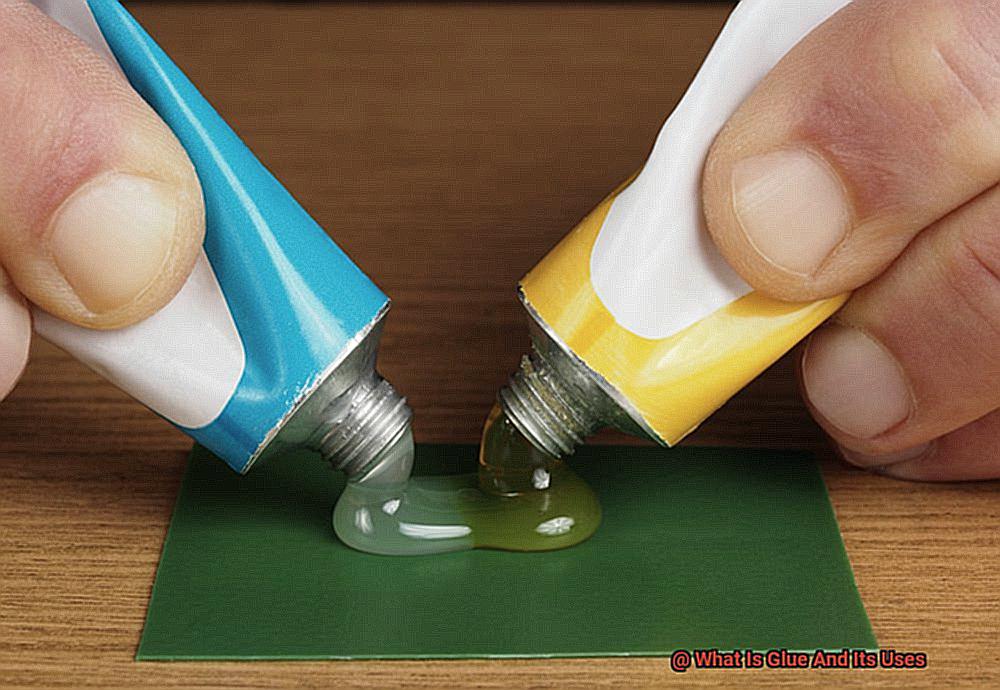
Fabric Projects:
When it comes to fabric projects like sewing or quilting, glue can be your secret weapon. It helps secure seams and edges, preventing them from unraveling. Additionally, fabric glues are washable and dry clear, making them perfect for clothing repairs or attaching embellishments to fabric.
Example: Add a touch of sparkle to your plain t-shirt by gluing rhinestones or sequins onto it using fabric glue. The glue will keep the embellishments securely in place even after multiple washes.
Woodworking:
Glue is an essential tool in woodworking, allowing you to join pieces of wood together securely. It provides a strong bond that ensures the stability and durability of your finished project. Different types of wood glue are available, such as PVA glue or epoxy, depending on the specific requirements of your project.
Example: Use wood glue to assemble a wooden picture frame or build a small wooden shelf for organizing your knick-knacks. The strong bond created by the glue will hold the pieces together, ensuring a sturdy and long-lasting result.
Plastic and Metal Projects:
Glue is not limited to just paper and fabric; it can also be used to repair broken plastic or metal items or create new ones. It can bond different types of plastic or metal surfaces effectively, providing a durable and long-lasting solution.
Example: Fix a broken plastic toy by applying a strong adhesive glue to the broken parts and holding them together until the glue sets. The glue will create a sturdy bond, allowing the toy to be played with again.
Decoupage:
Decoupage is a popular crafting technique that involves gluing cut-out images or designs onto various surfaces like furniture or picture frames. Glue acts as the adhesive, allowing you to create unique and personalized items that showcase your creativity.
Uses of Glue in Construction and Carpentry
In construction and carpentry, glue serves as a versatile adhesive that brings projects to life. In this article, we will explore the various uses of glue in these fields and how it can transform ordinary materials into extraordinary creations.
Enhancing Strength and Flexibility with Laminated Wood Panels:
- Glue is crucial for laminating wood panels, enhancing their strength and stability.
- It allows for flexibility in design, enabling the creation of curved or shaped pieces.
- Ideal for flooring, cabinetry, and furniture applications.
Creating Sturdy Connections through Furniture and Cabinet Assembly:
- Glue provides secure bonds between joints, ensuring durability over time.
- Creates clean and seamless connections that are less prone to failure than traditional fasteners alone.
Easy and Durable Flooring Installation:
- Adhesive-backed flooring products offer a convenient and cost-effective solution.
- Glue provides a secure bond that keeps the flooring in place even under heavy foot traffic.
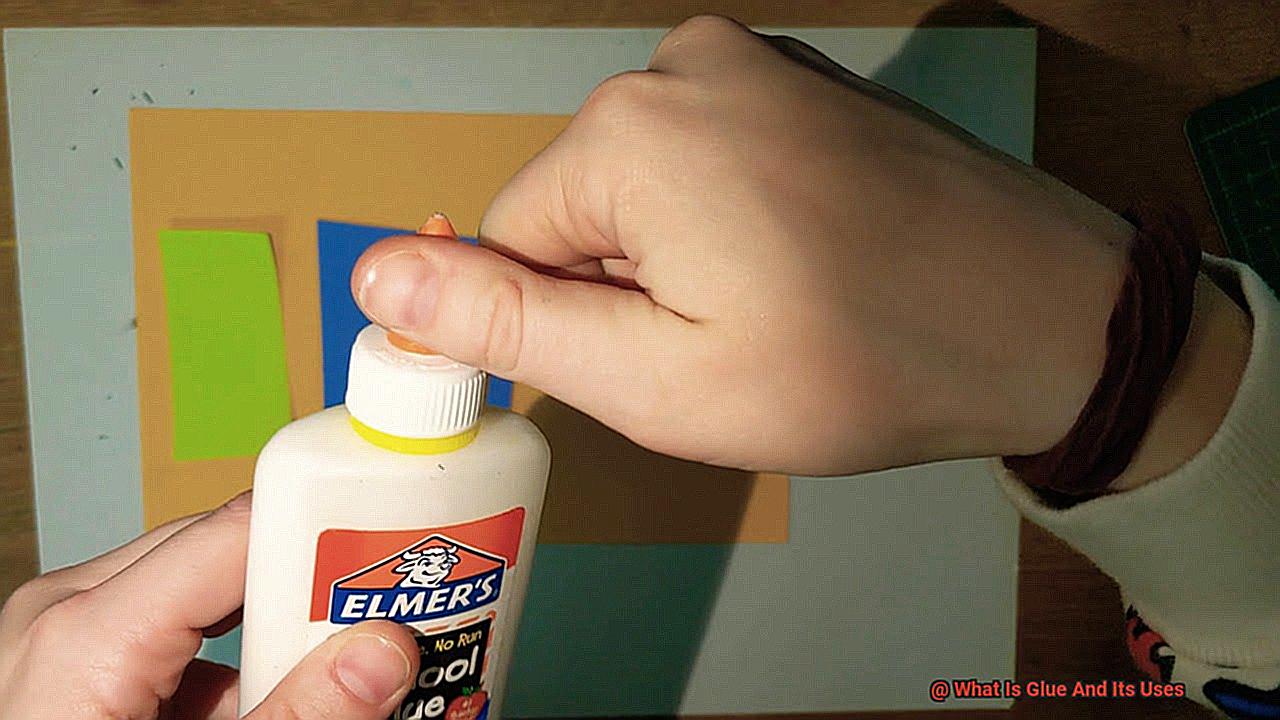
Seamlessly Attaching Trim and Molding:
- Glue eliminates the need for nails or screws, ensuring a seamless finish.
- Enhances the overall appearance of the room by providing a secure attachment.
Quick Repairs and Strong Bonds:
- Glue offers quick and reliable solutions for repairing broken items.
- Versatile adhesives can tackle a wide range of materials, from metal to plastic.
Uses of Glue in Manufacturing Industries
Glue, the unsung hero of the manufacturing world, is a versatile adhesive that has found its way into almost every industry. From automobiles to electronics, furniture to textiles, glue plays a crucial role in creating strong and durable products. Let’s take a closer look at some of the fascinating applications of glue in manufacturing industries.
In the automotive industry, glue is used for bonding various parts of vehicles. It helps to create seamless connections between body panels, interior components, and trim, resulting in a sturdy and aerodynamic structure. This not only enhances the aesthetics of the vehicle but also improves its overall performance and safety.
The furniture industry relies heavily on glue for assembling wooden pieces. Whether it’s crafting intricate designs or ensuring the longevity of the furniture, glue provides a strong bond that withstands the test of time. It enables manufacturers to create beautiful and functional pieces that enhance any space.
Construction companies also rely on glue for bonding materials like tiles, bricks, and concrete blocks. This ensures that buildings and structures can withstand harsh weather conditions and stand strong for years to come. Glue not only provides a secure connection but also allows for flexible movements, reducing the risk of cracks or structural damage.
In the electronics industry, glue is used for securing components on circuit boards. With its strong adhesive properties, it prevents parts from coming loose during operation and ensures the proper functioning of electronic devices. Additionally, glue provides insulation against moisture and electrical interference, further enhancing the reliability of electronic products.
The packaging industry depends on glue for sealing boxes and cartons. This ensures that products remain safe and intact during transportation and storage. With various types of adhesives available, manufacturers can choose the most suitable glue for their specific packaging needs.
Glue also finds its place in the textile industry, where it is used for attaching labels and tags to garments. Its strong bond withstands washing and handling, enabling brands to maintain their identity and provide essential information to consumers.
Woodworkers appreciate glue for its ability to join pieces of wood together. From simple joinery to complex constructions, glue allows craftsmen to create intricate designs while ensuring structural integrity. It enables the production of high-quality wooden products that are both visually appealing and long-lasting.
The aerospace industry heavily relies on glue for bonding various materials used in aircraft construction. Glue provides lightweight yet strong bonds that are crucial for maintaining the structural integrity of airplanes and spacecraft. It allows manufacturers to create strong and durable connections without adding excessive weight, contributing to fuel efficiency and overall performance.
Uses of Glue in Medicine
Glue, often associated with arts and crafts, has found its way into the world of medicine, revolutionizing various aspects of healthcare. From wound closure to complex surgeries, glue has become a game-changer in the industry. Let’s explore the fascinating uses of glue in medicine.
One of the major applications of glue in medicine is in wound closure. Medical adhesive glues, also known as tissue adhesives, offer a less invasive alternative to traditional sutures or staples. These glues effectively seal wounds and promote faster healing. They are particularly useful for small or superficial wounds where sutures may not be necessary.
In the field of dentistry, glue plays a crucial role in bonding dental restorations, such as crowns or bridges, to our natural teeth. Dental adhesive glues provide strong and durable adhesion, ensuring the longevity and stability of these restorations. This enables us to maintain healthy smiles and functional teeth.
Glue also finds its place in orthopedic surgeries. It is used to secure implants or prostheses to the bone, providing a secure fixation that reduces the risk of implant loosening or failure. This ensures the long-term success of orthopedic interventions and improves patient outcomes.
In ophthalmology, glue can be used to bond tissues together during certain eye surgeries, such as corneal transplantation or repair. This ensures proper healing and restoration of vision. Glue provides a reliable means of joining delicate eye tissues without causing damage or complications.
Beyond surgeries and wound closure, glue is even utilized in the manufacturing of medical devices and equipment. Glue is used to bond components together or secure parts in place, ensuring the structural integrity and functionality of critical medical tools. Without glue, these devices would not perform optimally or withstand the rigors of medical use.
But it doesn’t stop there. Glue has made its way into drug delivery systems as well. Special adhesive patches or films are designed to deliver medications through transdermal absorption. These patches adhere to the skin and slowly release medications into the bloodstream over time. This provides a convenient and controlled method of drug administration, improving patient compliance and treatment outcomes.
Furthermore, glue is being explored in the field of tissue engineering and regenerative medicine. Researchers are studying the use of bioadhesives to attach cells or tissues together, facilitating tissue regeneration and repair. The potential for glue in this field is immense, offering new possibilities for regenerating damaged tissues and organs.
It’s important to note that medical-grade glues are specifically formulated to meet stringent safety standards and biocompatibility requirements. They are designed to be non-toxic, non-irritating, and capable of withstanding the physiological environment of the human body. Extensive research and testing ensure that these glues are safe and effective for medical applications.
Uses of Glue in Arts and Crafts
Glue, the unsung hero of arts and crafts, possesses the power to transform ordinary materials into extraordinary works of art. It may not wear a cape, but it certainly has the ability to stick things together and take your projects to the next level. Let’s explore the marvelous world of glue and its various uses in arts and crafts.
Firstly, glue is a paper’s best friend. It allows you to create collages, attach paper cutouts, and make whimsical paper flowers or ornaments. The possibilities are endless when it comes to using glue with paper.
Next on our list is fabric-based arts and crafts. Instead of spending hours stitching every little piece together, glue can be a game-changer for sewing or quilting projects. It enables you to adhere fabric pieces and create stunning quilts or fabric collages. And if you’re feeling extra fancy, glue can help you attach beads or sequins onto fabric surfaces for that extra sparkle.
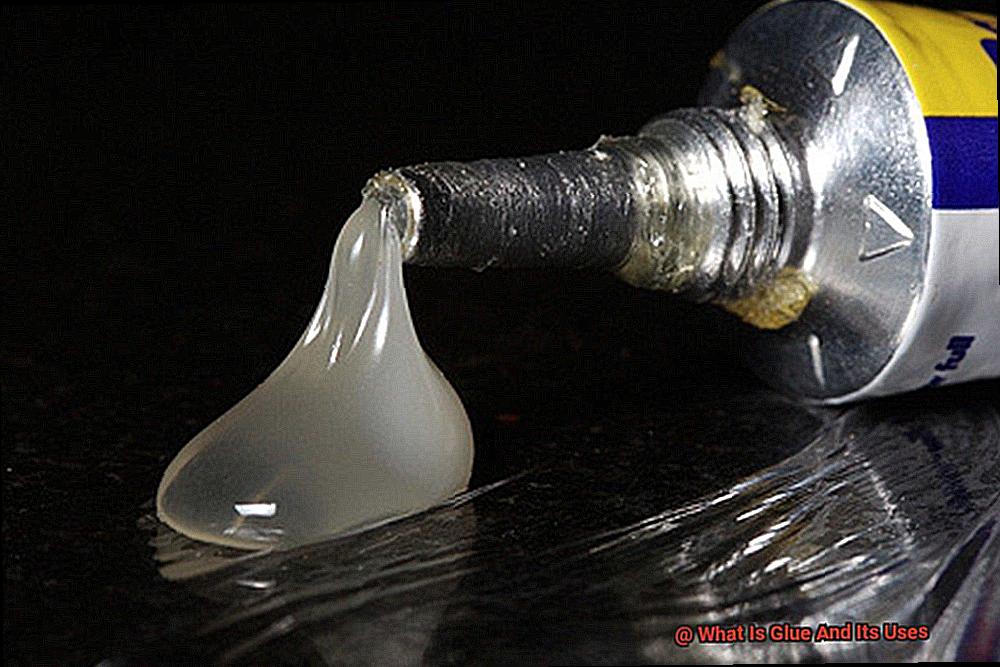
For three-dimensional projects, glue is your best friend. From assembling models to building sculptures or creating intricate dioramas, glue provides a strong bond that holds everything together securely.
Jewelry-making enthusiasts, listen up. Glue is here to save the day when it comes to attaching gemstones, beads, or other decorative elements onto metal or wire bases. With glue, you can create personalized pieces of jewelry that showcase your unique style.
But wait, there’s more. Glue is also great for repairing damaged items in arts and crafts. Whether it’s fixing broken ceramics, mending torn pages in a book, or reattaching loose parts of a sculpture, glue can work wonders in restoring functionality and aesthetic appeal.
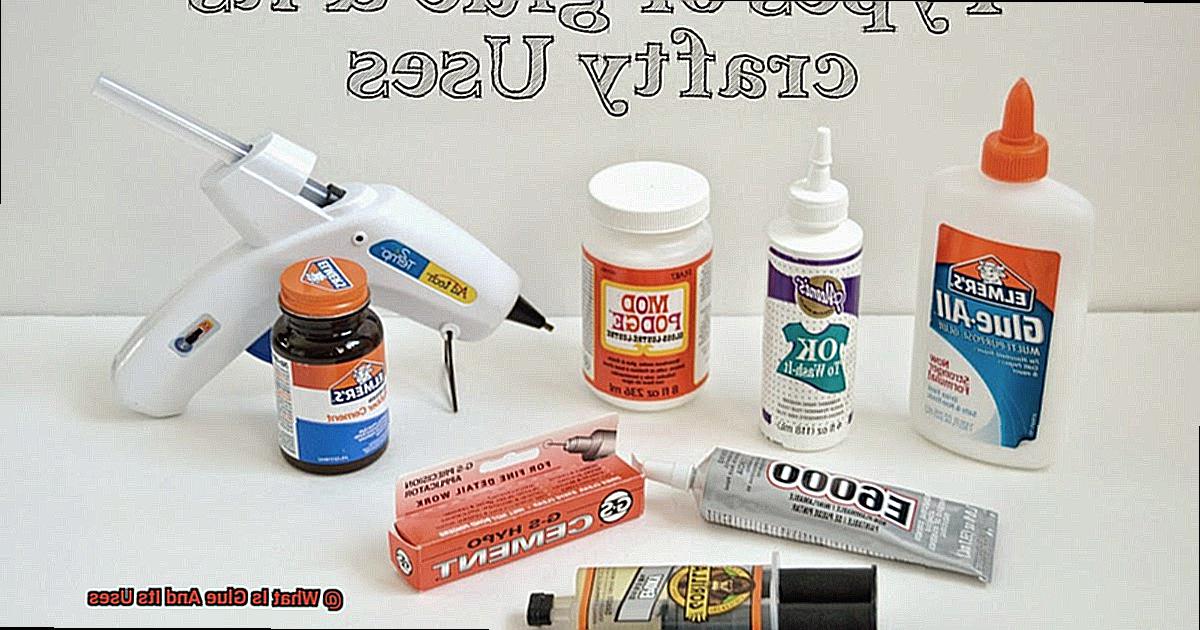
Mixed media projects? Check. Glue is the adhesive that binds different materials like wood, metal, fabric, and paper together. So go ahead and let your imagination run wild as you combine various materials to create one-of-a-kind artworks.
Want to add some texture to your projects? Glue has got you covered. Apply glue onto surfaces and sprinkle materials like sand, glitter, or small beads to create textured effects that add depth and visual interest.
But wait, there’s more. Glue can also be used as a sealant or protective coating for your finished projects. By applying a layer of glue over your masterpiece, you can protect it from dust, moisture, or damage. Plus, it can give a glossy or matte finish to enhance the overall appearance.
Last but not least, glue is your go-to adhesive for all DIY projects. Whether you’re creating handmade cards, designing scrapbooks, or decorating home accessories, glue is the trusty sidekick that will help bring your ideas to life.
Practical Uses Around the House
Today, we embark on an exploration of the world of glue and its numerous practical applications around the house. Glue, often hailed as a superhero in the realm of arts and crafts, holds an equally vital role for DIY enthusiasts, homeowners, and creative individuals alike. Prepare to be amazed as we delve into the versatility of this adhesive powerhouse and uncover its ability to come to your rescue in a multitude of situations.
Repair Broken Items: A Glue’s Healing Touch
When confronted with broken items, glue offers an indispensable solution. From cracked vases to wobbly chair legs, a mere dab of glue can work wonders. Remember, though, that choosing the appropriate type of glue for different materials is crucial to ensure a long-lasting fix.
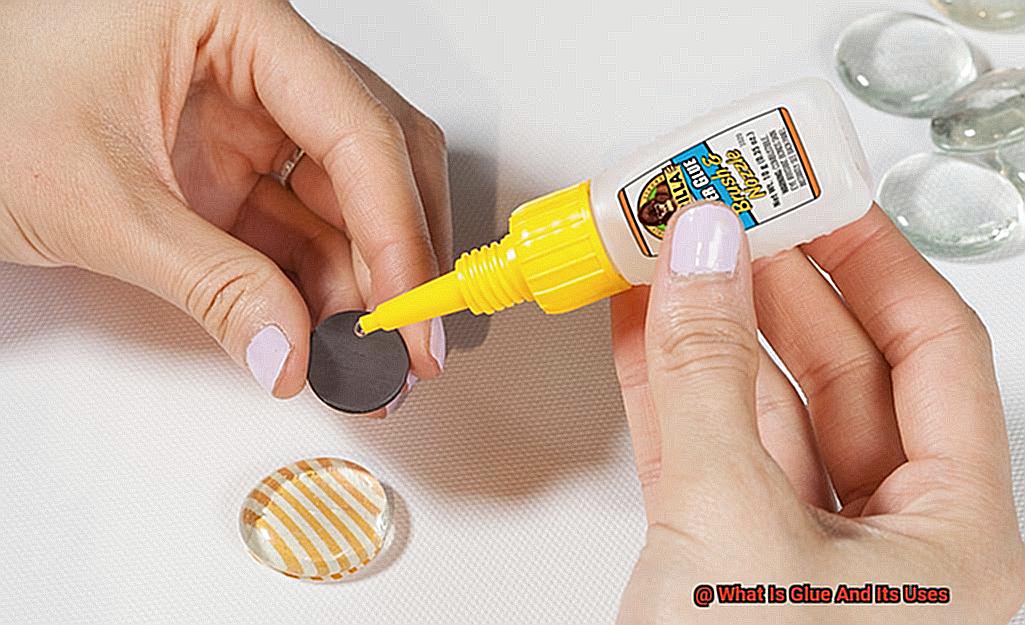
DIY Projects: Bonding Materials and Creativity
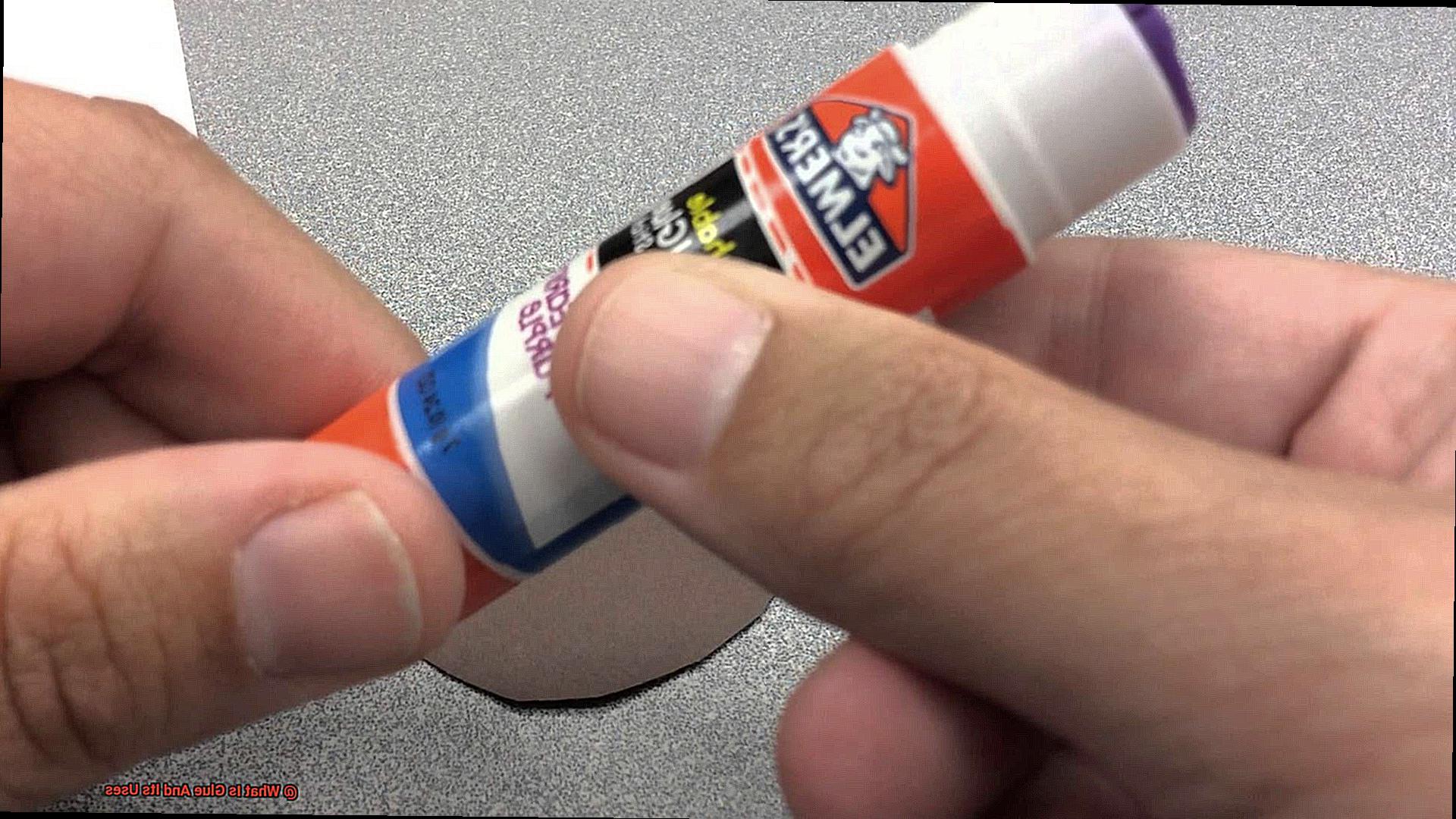
Glue becomes a DIY enthusiast’s best friend, lending its strength to the creation of small wooden structures or decorative crafts. Its unwavering bond guarantees the durability and structural integrity of your final masterpiece.
Home Decoration: Transforming Spaces with Precision
Yearning to breathe new life into your living space? Glue steps up to the challenge. Seamlessly attach wallpaper, tiles, or fabric to walls, floors, or furniture with precision and unwavering security. With glue as your ally, effortlessly elevate the aesthetics of your home.
Household Repairs: Saving Time and Money
Why opt for replacement when repair is at hand? Glue proves itself as a cost-effective solution for fixing loose hinges on doors or reattaching handles on kitchen utensils. Embrace the satisfaction of fixing instead of disposing.
Organizing Purposes: Taming Chaos with Adhesive Mastery
Bid farewell to tangled cables and chaotic spaces with the aid of glue. Secure cables and wires together with precision, creating an organized and visually appealing environment. Additionally, attach hooks or hangers to walls, allowing for the elegant display of keys, hats, or coats.
Arts and Crafts: Unleashing the Creative Spirit
Unleash your creative prowess with the aid of glue. An indispensable tool for collages, paper crafts, and other artistic endeavors, glue breathes life into your ideas. Whether it be school assignments or personal hobbies, watch as your imagination takes shape.
Gardening: Nature’s Ally in a Bottle
Surprisingly, glue even finds its place in the garden. Mend broken flower pots or attach labels to planters with this versatile adhesive. Opt for waterproof and weather-resistant glue to combat the elements and ensure long-lasting results.
Minor Fixes: A Convenient Household Companion
For those everyday household repairs that require a quick fix, glue proves to be a dependable ally. Repair loose book bindings or reattach small parts of appliances effortlessly, without the need for professional assistance.
Advantages of Using Glue
Glue is a versatile and powerful tool that can be utilized in a multitude of ways. Whether you’re an arts and crafts enthusiast, a DIY aficionado, or simply someone who wants to fix things around the house, glue has got your back. Let’s dive into the advantages of using glue and discover why it’s a superhero in the realm of bonding.
First and foremost, one of the major advantages of using glue is its versatility. Glue is a master of all trades when it comes to bonding materials together. It can effortlessly bond wood, metal, plastic, fabric, and even glass. This versatility makes it an indispensable tool for various applications such as crafting, woodworking, repairs, and industrial projects.
Another advantage of using glue is its ease of use. Unlike other bonding methods like welding or sewing, glue is incredibly easy to use. You don’t need any specialized equipment or expertise to apply it. Just simply apply it to the surfaces being joined and let it dry. This simplicity makes glue accessible to people of all skill levels and a popular choice for DIY projects and simple repairs.
In addition to being easy to use, glue is designed to create strong and durable bonds between materials. Depending on the type of glue used and the materials being bonded, glue can provide excellent adhesion. Some glues are specifically formulated to bond heavy-duty materials or withstand extreme temperatures. This strength and reliability make glue a dependable choice for various applications.
Time is of the essence when working on projects or repairs. Luckily, many types of glue have a relatively quick drying time, allowing for efficient work and faster project completion. Quick-drying glues enable users to move on to the next step without waiting for extended periods, increasing productivity and efficiency.
Glue is also a cost-effective option compared to other bonding methods. It is available in a range of price points, allowing users to choose the most suitable option for their budget. Additionally, since glue can be used in small quantities, it offers cost savings by reducing wastage.
One of the unique advantages of using glue is that it provides a non-invasive bonding method. Glue does not damage or alter the appearance of the materials being joined. Unlike nails or screws that leave visible marks or holes, glue creates seamless connections. This makes it ideal for projects where aesthetics are important or for delicate materials that cannot be punctured.
The world of glue is vast and diverse. There are wood glues, fabric glues, epoxy glues, super glues, and many more. Each type is designed to cater to specific applications and materials. This extensive range ensures that there is a suitable glue for every project or material requirement.
Disadvantages of Using Glue
Glue, the superhero of bonding, may seem like the perfect solution for all your crafting and repair needs. However, like any superhero, glue does have its weaknesses. Let’s explore the potential drawbacks of using glue, so you can make informed decisions about when and how to use it.
First and foremost, glue can be incredibly messy. No matter how careful you are, it always manages to find its way onto your hands, clothes, or work surface. And let’s not forget about the dreaded dried glue – removing it can be a real challenge, often requiring scraping or the use of harsh chemicals. So be prepared for some serious clean-up time after your project is complete.
But that’s not all – some glues emit strong odors or fumes that can be downright overpowering. These fumes can be particularly troublesome for individuals with respiratory conditions or sensitivities. Prolonged exposure to these toxic vapors can lead to headaches, dizziness, or even allergic reactions. So if you’re working in a poorly ventilated area or have respiratory issues, it’s important to take precautions.
If skin irritation is your concern, certain types of glue can cause redness, itching, or even rashes. Those with sensitive skin need to be extra cautious when using these adhesives. Protective gloves are a must to minimize the risk of irritation and discomfort.
But what if you need a sturdy bond? Well, glue may not always be up to the task. Depending on the type of glue used, it may not be suitable for heavy-duty or load-bearing projects. In such cases, alternative methods like screws or nails may be more appropriate to ensure a secure hold.
And let’s not forget about the passage of time – glue bonds may weaken over it. The durability of glue can be affected by temperature changes, moisture exposure, and aging. This means that after a while, items may come apart or repairs may fail. It’s something to keep in mind if you’re looking for long-lasting results.
Even after the glue has dried, its sticky residue can create a whole new set of problems. It can be difficult to remove from surfaces and often leaves behind a stubborn residue. This residue is a magnet for dirt and debris, making the affected area look unsightly and dirty.
Last but not least, once glue has set, it’s nearly impossible to undo the bond without causing damage. Unlike other fastening methods like screws or clips, glue is not reversible or adjustable. So if you need to make modifications or repairs, be prepared for a challenge.
6qutTkJ4rO8″ >
Conclusion
The uses of glue are vast and varied. From simple household repairs to intricate craft projects, glue is an essential tool in our everyday lives. It is a sticky substance that bonds materials together, creating a strong and durable connection. Whether it’s fixing a broken vase or assembling a model airplane, glue provides the adhesive power needed to hold things in place.
One common use of glue is in woodworking. It helps to join pieces of wood together, allowing for the creation of sturdy furniture and structures. The adhesive properties of glue ensure that the joints remain secure and stable over time.
Glue also plays a crucial role in the world of arts and crafts. It allows artists and hobbyists to bring their creative visions to life by sticking various materials together. Whether it’s paper, fabric, or even plastic, glue can bond different surfaces together seamlessly.
In addition to its practical uses, glue also has industrial applications. In manufacturing processes, it is used to assemble products like cars, electronics, and furniture on a large scale. The strong bond created by glue ensures that these products withstand the test of time and usage.
Furthermore, glue is not limited to just bonding materials together. It can also be used for sealing purposes. From envelopes to packages, glue provides a reliable seal that keeps contents secure during transit.
Overall, the uses of glue are extensive and invaluable in countless aspects of our daily lives. Its adhesive properties make it an indispensable tool for repairs, crafts, manufacturing, and more.

